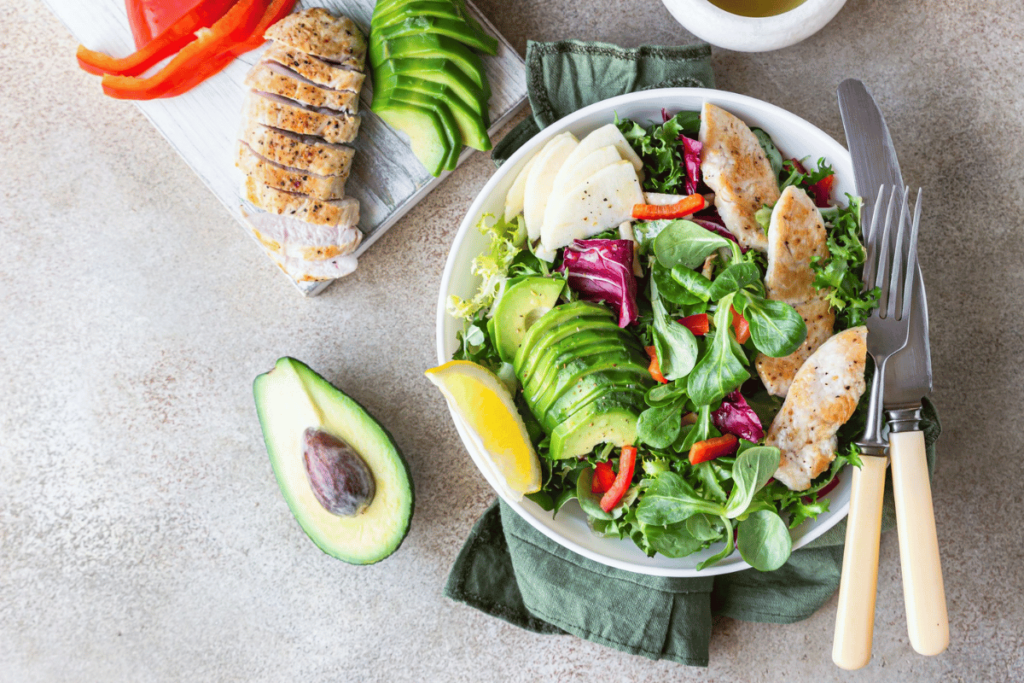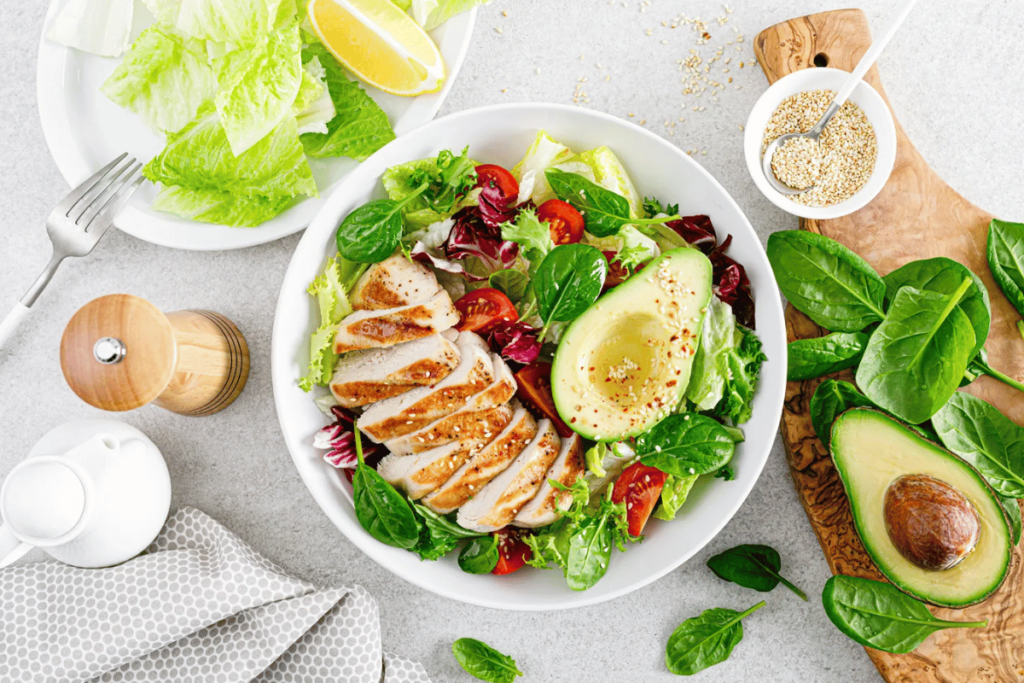As the winter holidays approach, many of us find ourselves in a festive, yet challenging time for weight management. This season, often characterized by an abundance of delicious but calorie-dense foods, poses a particular dilemma for those of us trying to maintain or achieve a healthy weight. In this article, we’ll focus on recipes for women to lose weight, a topic that’s not just timely but essential for those seeking a balance between celebrating the holiday spirit and staying true to their health goals.
The joy of holiday feasting is undeniable, yet it’s crucial to navigate this period without compromising our nutritional well-being. We’ll explore how women can relish the seasonal delights while keeping their weight loss objectives in check. It’s about finding that sweet spot where holiday treats meet healthy eating habits. So, let’s embark on this journey of discovering festive, flavorful, and health-conscious recipes specifically tailored for weight loss during the winter holiday season.

Exploring the Challenge of Healthy Eating During Winter Holidays
The winter holidays bring a unique set of challenges for women focusing on healthy eating and weight loss. This festive period is often synonymous with rich, indulgent foods that are deeply embedded in tradition and celebration. However, these same foods can pose significant hurdles for those adhering to a weight loss regimen. The key issue lies in reconciling the desire to partake in these seasonal delights with the need to follow recipes for women to lose weight.
For many, the holiday season is a time of culinary temptation, with traditional dishes often high in calories, fats, and sugars. This abundance can derail even the most disciplined eaters from their weight loss goals. The conflict arises in balancing the joy of holiday eating with the commitment to a health-conscious diet. How can women enjoy the essence of holiday meals while still adhering to weight management principles? This is where the incorporation of weight-conscious recipes becomes crucial, allowing the enjoyment of festive meals without compromising dietary goals. In the following sections, we’ll delve deeper into strategies that harmonize the celebration of holiday flavors with effective weight management techniques.
Analyzing Weight Management Strategies for Women in the Holiday Season
Nutritional Challenges in Holiday Foods
The festive season is often laden with foods rich in calories, sugars, and fats, presenting significant nutritional challenges for women aiming to lose weight. Traditional holiday meals, while delicious, can be major stumbling blocks in weight management efforts. For instance, a study by the Harvard School of Public Health highlights the high calorie content in typical holiday dishes, which can impede weight loss goals. This section will examine the nutritional composition of common holiday meals, emphasizing their impact on weight loss efforts. By understanding these challenges, women can better prepare and adjust their dietary choices, aligning them with recipes for women to lose weight.
Incorporating Balanced Diet Principles
To counterbalance the indulgences of the holiday season, integrating weight-loss-friendly recipes into holiday meals is crucial. This approach doesn’t mean sacrificing enjoyment but rather making smarter, healthier choices. Nutrition experts, like those from the Mayo Clinic, advocate for a balanced diet that includes a variety of nutrients while still allowing for occasional indulgences. They suggest incorporating more vegetables, lean proteins, and whole grains into traditional recipes to enhance their nutritional value. This subsection will discuss practical strategies to blend these principles into holiday meals, ensuring that women can enjoy festive foods without derailing their weight loss efforts.
The Role of Mindful Eating During Festivities
Mindfulness and portion control are pivotal in managing weight during the holiday season. The concept of mindful eating, endorsed by institutions like the American Heart Association, involves being fully attentive to the eating experience. This practice encourages women to enjoy traditional holiday flavors while maintaining control over their diet. Techniques such as savoring each bite, eating slowly, and paying attention to hunger and fullness cues can significantly aid in portion control. This section will highlight how mindful eating can be a game-changer for women seeking to balance holiday indulgences with health-conscious choices, particularly when following recipes for women to lose weight.
In this part of the article, we’ve addressed key strategies for weight management during the holiday season. Citing authoritative sources and incorporating expert advice, we aim to empower women with knowledge and practical tips to enjoy the holidays without compromising their weight loss goals.
WEIGHT LOSS MEAL PREP FOR WOMEN (1 WEEK IN 1 HOUR)
Crafting Winter Holiday Recipes for Effective Weight Loss
The winter holiday season need not be a time of dietary despair for women seeking to lose weight. By offering a collection of five specially curated recipes, we aim to demonstrate that festive foods can be both delicious and weight-loss friendly. Each recipe has been carefully designed to align with weight management goals while still capturing the essence of holiday flavors.
Recipe 1: Festive Quinoa and Roasted Vegetable Salad
This vibrant salad combines the nuttiness of quinoa with a medley of roasted vegetables, offering a high-fiber, nutrient-rich dish. Its preparation involves roasting seasonal vegetables like carrots, Brussels sprouts, and sweet potatoes, then mixing them with cooked quinoa and a light, homemade dressing. The dish is not only filling but also aligns with the key concept of recipes for women to lose weight by being low in calories and high in essential nutrients.
Recipe 2: Herb-Infused Turkey Breast
Lean turkey breast, marinated in a blend of fresh herbs and spices, provides a protein-rich centerpiece that’s both satisfying and healthy. The key to this recipe is its low-fat content and high protein, making it an ideal choice for weight loss. The herbs add a burst of flavor without additional calories, ensuring that you enjoy the festive taste without compromising your diet.
Recipe 3: Cauliflower Mash with Garlic and Chives
A perfect substitute for traditional mashed potatoes, this cauliflower mash is creamy, flavorful, and significantly lower in carbohydrates. The addition of garlic and chives enhances its taste, offering a comforting side dish that complements any holiday meal. This recipe is a testament to how classic holiday dishes can be modified to become weight-loss-friendly without losing their appeal.
Recipe 4: Baked Salmon with Citrus and Herbs
Omega-rich salmon baked with a citrus-herb crust offers a heart-healthy main course that’s both simple and elegant. This dish focuses on good fats and lean protein, essential components in recipes for women to lose weight. The citrus and herbs provide a fresh, light taste that’s perfect for a holiday dinner.
Recipe 5: Spiced Baked Apples with Greek Yogurt
Ending the meal on a sweet note, these baked apples are filled with holiday spices and served with a dollop of Greek yogurt. This dessert is a healthier alternative to traditional holiday sweets, offering the comfort of a festive treat without the excess calories and sugars.
These recipes are more than just dishes; they are a roadmap for enjoying the holiday season without neglecting health and weight loss goals. By making small adjustments to traditional recipes and choosing ingredients wisely, it’s possible to create a holiday menu that’s both indulgent and conducive to weight loss.
Reflecting on Healthy Holiday Eating Habits
As we conclude this exploration of healthy and delicious recipes for women to lose weight during the winter holiday season, it’s clear that balance is key. The insights shared throughout this article highlight the importance of finding harmony between savoring festive foods and maintaining a nutritious diet. These strategies aren’t just about weight management; they’re about making health-conscious choices that can enhance our overall well-being during what can be a challenging time of year.
This journey has underscored the significance of mindful eating, nutritional awareness, and the creative adaptation of traditional recipes. By incorporating weight-loss-friendly recipes into our holiday menus, we can celebrate without compromising our health goals. It’s about enjoying the festive spirit in a way that also respects our bodies and our long-term health objectives.
We invite you to reflect on these ideas and share your thoughts and experiences. Have these strategies and recipes inspired you to approach the holiday season differently? Are there specific adaptations you’re excited to try in your holiday cooking? Your insights and intentions regarding healthy eating during this festive season are valuable, not just to us but to the broader community seeking similar balance.
Let’s continue this conversation and support each other in making health-conscious choices that are both joyful and fulfilling. Together, we can redefine the holiday experience to be both indulgent and health-promoting, guided by the principle of recipes for women to lose weight and a commitment to overall wellness.

Addressing Frequently Asked Questions About Healthy Holiday Eating for Weight Loss
In this final section, we address some common questions surrounding healthy holiday eating and weight loss, specifically focusing on recipes for women to lose weight. Our answers are grounded in research and advice from nutrition experts, aimed at providing practical, realistic guidance.
Q1: How can I modify traditional holiday recipes to be more weight-loss-friendly? A1: Start by reducing sugar and fat quantities, and consider ingredient substitutions like using Greek yogurt instead of cream, or whole-grain flour in place of white flour. For example, in baking, apple sauce can be a great substitute for oil. These minor tweaks can significantly lower the calorie content of your dishes without sacrificing taste.
Q2: What strategies can I use to manage holiday cravings? A2: Managing cravings starts with mindfulness. Acknowledge your cravings and understand what triggers them – often, it’s not just hunger but also emotions. Ensure you’re eating balanced meals throughout the day to avoid extreme hunger. When cravings do hit, try satisfying them with healthier options. For instance, if you’re craving something sweet, opt for a piece of dark chocolate or a fruit-based dessert.
Q3: How can I stay motivated with my dietary goals during festive times? A3: Setting realistic goals and not being too hard on yourself is crucial. Remember, it’s okay to indulge in moderation. Focus on the long-term benefits of a healthy lifestyle rather than short-term weight loss. Keeping a food diary or planning meals in advance can also help maintain focus and accountability.
Q4: Are there any specific ingredients I should avoid in holiday recipes to support weight loss? A4: Limit high-calorie ingredients like heavy cream, excessive cheese, and processed sugars. Opt for natural sweeteners like honey or maple syrup in moderation, and use herbs and spices for flavor instead of salt or butter. Choosing lean proteins and incorporating plenty of vegetables can also make holiday meals healthier.
Q5: Can I still enjoy holiday parties and dinners while trying to lose weight? A5: Absolutely! The key is moderation and making smart choices. Prioritize dishes that align with your dietary goals – look for recipes for women to lose weight that are rich in proteins and vegetables. Eat a healthy snack before attending a party to avoid overeating. At the party, practice portion control and focus on enjoying the company and the experience, not just the food.
These FAQs aim to guide and support you in navigating the holiday season healthily and joyfully, keeping in line with your weight loss goals. Remember, the holidays are not just about food but also about celebration, gratitude, and community. With the right approach, you can enjoy this festive time while staying true to your health and wellness objectives.